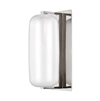- 07
- Aug
A Shared Journey: Celebrating the Impact of Mother and Child Home Lighting
A Shared Journey: Celebrating the Impact of Mother and Child Home Lighting
I recently went on a business trip, and it’s been a while since I last updated the blog post. Did you miss me?
Today, I’d like to share an article about “Mother and Child Home Lighting Design.” My reason for the business trip was to investigate a high-end confinement center’s premises and analyze the lighting data of the entire environmental setup.
Confinement practices are mainly prevalent in China, with limited occurrences overseas. Maternal and baby home lighting is a highly specialized area that often goes unnoticed, resulting in a scarcity of practical experience sharing. I believe that the topic I’m sharing will be incredibly beneficial to everyone.
Our physiology and psychology undergo significant changes from infancy to toddlerhood, teenage years to young adulthood, and middle age to old age. These developmental stages influence how we perceive and experience our surroundings, emotions, and environments. As a result, an individual’s lighting preferences and requirements can differ across different age groups. When a household comprises three generations, ensuring that the home lighting caters to the diverse needs of all family members becomes crucial. Optimal lighting is inherently “people-oriented” and must be tailored to individual preferences.
For instance, infants’ physiological development is still delicate, necessitating stringent safety measures for lighting sources. Adolescents, while brimming with energy, face considerable academic stress, making the prevention of myopia a paramount concern. Working professionals, often juggling office tasks from the comfort of their homes, strive for efficient and productive work setups. Meanwhile, older adults contend with reduced mobility, underscoring the significance of a safe living environment.
This chapter aims to present strategies for establishing a smart lighting environment that accommodates the distinct requirements of various age groups, thereby fostering a smart and wholesome lighting atmosphere for the entire family (refer to Figure 1).
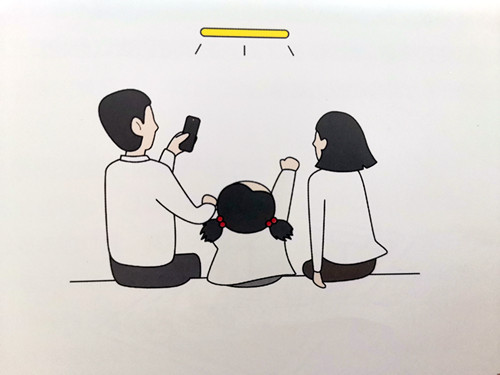
Designing Maternal and Baby Home Lighting – Embrace Your Little Angel with Healthy and Nurturing Light
For newborns, light serves as one of the most immediate avenues through which they perceive their novel surroundings. The lighting arrangement within a family space holds the potential not only to impact the baby’s visual health but also to influence their physical development. Mastering the skill of crafting a wholesome lighting environment for infants becomes an essential lesson for every new parent.
Furthermore, for mothers engaged in breastfeeding, the upheaval in family dynamics and daily life often gives rise to feelings of anxiety. Establishing a comfortable lighting atmosphere can play a pivotal role in creating a stable ambiance, thereby fostering a sense of contentment and joy (see Figure 2).
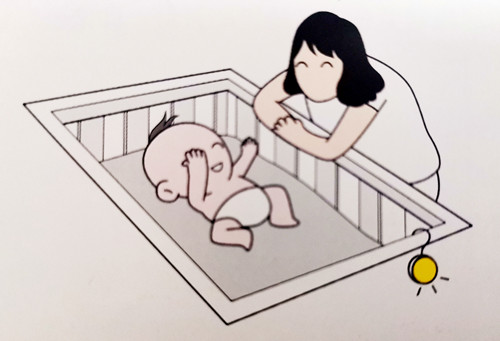
1. The Impact of the Light Environment on Mothers and Babies
1.1 Adverse Effects of Intense Light on Baby’s Visual Development
The initial two years of a baby’s life represent a crucial phase for the progression of their vision. Throughout this period, the baby’s eyes gradually learn to focus, discern colors, and gauge distances, facilitating the gradual maturation of their visual abilities. Concurrently, this phase also corresponds to a period when the baby’s eyes are at their most delicate state. Inappropriate lighting conditions within the home can detrimentally influence not only the baby’s visual development but even pose the risk of harming their delicate eyes.
The living space of a baby should be characterized by gentle lighting. Prolonged and direct exposure to intense light (refer to Figure 3) can diminish the baby’s innate resilience. Such strong illumination continually stimulates the baby’s eyes, leading to inadequate relaxation of the eyeballs and ciliary muscles, resulting in varying degrees of damage to the baby’s retina and eyeballs. It is worth noting that apart from the brightness aspect of the light, factors like blue light and flickering light can also impact the baby’s visual development and overall ocular health.

1.2 Nocturnal Lighting and its Impact on Baby’s Growth
The lighting conditions within a home play a pivotal role in influencing a baby’s sleep, growth, and overall development through their impact on hormone secretion. This connection is primarily manifested in the modulation of melatonin secretion within the baby’s body due to light exposure. Substantial melatonin secretion acts as a catalyst for the release of growth hormones in their system. This phenomenon holds true for both infants and adults; melatonin secretion surges when darkness prevails and diminishes promptly upon exposure to a lit environment.
To safeguard the undisturbed secretion of melatonin during a baby’s nocturnal hours, it’s advisable to refrain from illuminating their sleeping space. Even if lighting becomes necessary, it’s crucial to minimize the luminance of the lights to the greatest extent possible.
1.3 Impact of the Light Environment on Maternal Mental Health
While a newborn instantaneously becomes the focal point for the entire family, the mother – who invests the most during pregnancy and breastfeeding – often risks being overshadowed. There tends to be an emphasis on the physical well-being of postpartum women, with their mental health frequently overlooked. However, the mental well-being of new mothers is of equal significance. Statistical data indicates that approximately 20% of new mothers experience postpartum depression due to fluctuations in hormone secretion and postpartum fatigue.
It’s common knowledge that the quality of the lighting environment can directly influence an individual’s mood, and varied lighting attributes evoke distinct psychological responses. When considering color temperature, the presence of warm yellow light imparts a sense of comfort and tranquility, thereby aiding in alleviating the anxiety experienced by new mothers.
2. Design Principles for Maternal and Child Room Lighting
2.1 Minimize the Use of Direct Light Sources
From birth to the toddler stage, the bed serves as the primary activity space for a baby, where they spend a significant amount of time lying down. Moreover, due to their inherent curiosity, babies frequently fixate on more prominent sources of light. Hence, when crafting the lighting layout for the maternal and child room, particularly around the crib area, it’s advisable to prevent direct illumination from lamps from reaching the baby’s eyes. Consequently, while selecting lighting fixtures, opt to abstain from employing tube-type spotlights and instead favor ceiling lamps or light troughs.
In situations where smart led spotlights are integrated into the maternal and child room, and altering the lamp arrangement is unfeasible, the intelligent lighting system’s grouping feature can be employed. This entails utilizing the control system to deactivate lights within the baby’s designated activity zone.
2.2 Prioritize High-quality Lighting Fixtures
When choosing lighting products for the maternal and child room, the emphasis should be on high-quality functional lighting solutions. It’s advisable to steer clear of ornate yet inadequately illuminated lamps, such as certain budget-friendly crystal chandeliers. Furthermore, the overall illumination within the living space should be evenly distributed, minimizing the occurrence of dimly lit corners. To achieve this, functional light sources like table lamps and bedside chandeliers can be strategically positioned to regulate and enhance the luminosity of specific areas.
Maintaining a uniform and steady lighting environment throughout the home is imperative to prevent issues like flickering and glare. Employing light fixtures with a soft start function can prevent abrupt shifts in brightness that might strain the eyes, thereby offering a cushioning effect for visual comfort and safeguarding the well-being of the baby’s eyesight.
2.3 Custom Color Temperature and Brightness for Exclusive Maternal and Child Needs
Diverse activities demand distinct lighting atmospheres for babies. Whether it’s playtime, sleep, or nighttime feeding, each scenario necessitates specific lighting conditions. Therefore, it becomes imperative for home lighting fixtures to be adaptable and equipped with various intelligent scene modes. The color temperature of the lighting should strike a balance between being neither overly cold nor excessively warm, ideally opting for warm white light or white light within the range of 3000 to 4500 K. This choice also aids mothers in maintaining a stable and contented mood during pregnancy preparation and recovery phases.
It’s common for mothers to fret about disturbing their baby’s sleep or inducing crying when illuminating the room for nighttime breastfeeding. However, incorporating a small night light with an approximate luminous flux of 1m (typically ranging between 0.7 and 3m for high-quality night lights available in the market) can mitigate the abrupt changes in ambient light that might rouse the baby. This way, the baby is less likely to sense significant alterations in lighting, assuaging the mother’s concerns about waking the baby while breastfeeding (see Figure4).
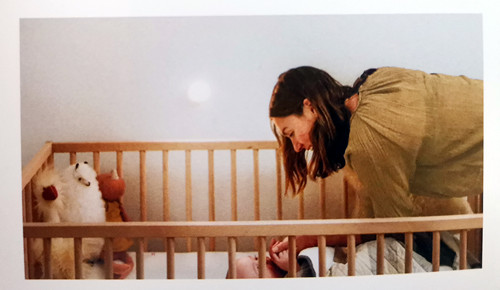
2.4 Soundless Management of Lamps and Fixtures
Furthermore, ensuring optimal rest for the baby remains paramount for their growth and development. How can one swiftly and precisely regulate and manipulate room lighting without disturbing the baby’s slumber? Equally significant is the challenge of effecting these adjustments in complete silence, preventing any potential disruption to the sleeping infant. Conventional light switches often emit a distinct “click” sound upon operation, which proves unsuitable for households with mothers and babies. To tackle this, a smart approach to home lighting control becomes imperative.
Utilizing mobile phones or touch panels for quiet control is highly recommended, ensuring that the entire process remains noiseless to avoid awakening the baby. It’s equally important to avoid positioning voice-activated speakers within the baby’s room or to limit their use in the home, as these could inadvertently generate sounds that startle the baby.
2.5 Harnessing Natural Light Sources Thoughtfully
Natural light stands as the healthiest and most pleasing form of illumination. When planning the maternal and child room, opting for a space that is well-lit, sunlit, and properly ventilated is of utmost importance. Maximizing daylight penetration into the room by keeping curtains open during the day is highly recommended. Research indicates that prolonged dependence on artificial lighting can disrupt the body’s circadian rhythm and physiological patterns, leading to not only eye fatigue but also hindering the capacity of growing and developing infants to absorb essential nutrients. Prolonged exposure to artificial light might contribute to listlessness and difficulty in concentration for babies. Excessive artificial lighting could even trigger early puberty in children. In light of these considerations, it’s advisable to limit artificial lighting usage during the daytime, minimize its duration, and instead enable babies to bask in the benefits of natural light.
3. Key Smart Lighting Modes for Maternal and Infant Spaces
3.1 Play Mode: Elevating Baby’s Playtime Comfort
Ensuring a comfortable and eye-friendly lighting environment is crucial when the baby is immersed in play and exploration. During these interactive moments between the baby and their caregivers, the room’s lighting should radiate brightness, comfort, and warmth. To shield the baby’s eyes from direct illumination, prioritize ceiling lamps and led strip lights as the primary lighting components (see Figure 4.5). Simultaneously activating the upper section (led strip lights, ceiling lamp) and the middle section (wall lamp), with a color temperature adjustment to around 4000 K, proves to be an optimal choice. Additionally, increasing the brightness level offers added convenience in monitoring the baby’s activities.
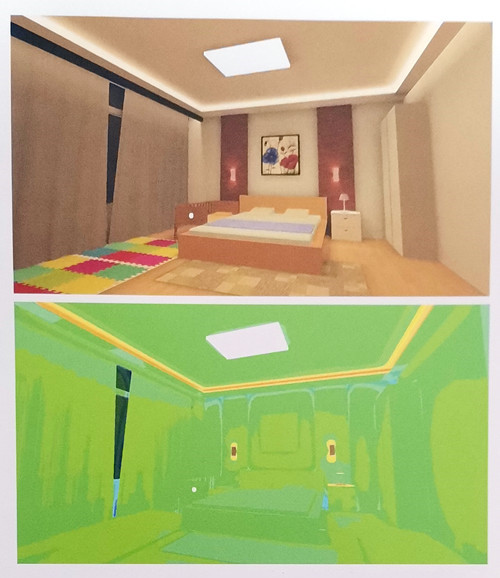
3.2 Sleep Mode: Creating an Environment for Swift Baby Slumber
The “sleep mode” is designed to facilitate nighttime sleep for babies, favoring a gentle ambient light rather than complete darkness for their slumber (refer to Figure 6). In this mode, the ceiling light in the upper section is deactivated, while the light strip’s brightness is adjusted to 10%. The wall lamp in the middle section is switched off, and the bedside light’s brightness in the lower section is set to 10%. The curtains are programmed to close automatically, resulting in a subdued overall lighting atmosphere. The led strip light is programmed to turn off automatically after 20 minutes. Once the baby falls asleep, the bedside lamp can be manually switched off.
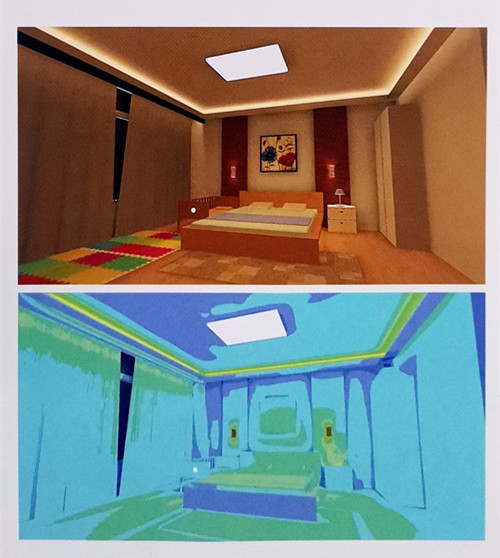
Given the distinct routine of a baby, particularly newborns who tend to sleep and wake at irregular intervals, employing “sleep aid mode” and “wake-up mode” activated at set intervals is less suitable for their needs.
3.3 Night Feeding Mode: Easing Mothers’ Midnight Tasks
For mothers attending night feedings or diaper changes, simplicity and ease are key. In such moments, activating only the bedside lamp and the night light suffices (see Figure 7). The night light can be set to 20% of the default brightness of the bedside lamp, with a color temperature of 2700K. Alternatively, the “Night Light Mode” feature of the bedside lamp can be utilized. When preparing milk formula, merely turning on the bedside lamp is sufficient. Notably, the night light is equipped with a human body sensor function, enabling automatic activation.
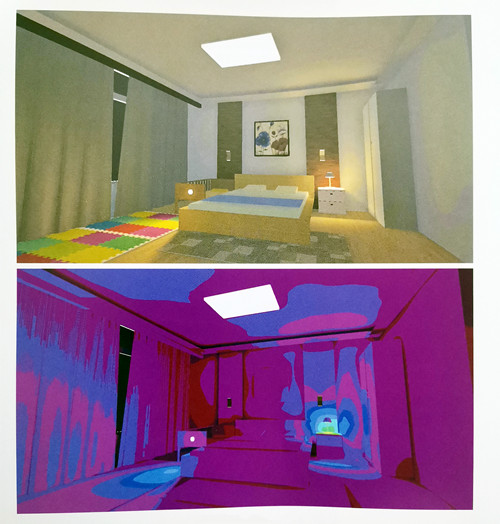
4. Creating a Tailored Lighting Environment for Mothers and Babies, Step by Step
Step 1: Designing Lighting Layout
Using the lighting effect diagram shown in Figure 4.5 as an exemplar, develop the lighting arrangement for the maternal and child room (refer to Figure 8). Employ ceiling lamps, LED strips light, wall lamps, bedside lamps, and night lights as lighting sources within the maternal and child room, with ceiling lamps and LED strips light serving as the primary light fixtures.

Step 2: Procuring Lamps and Smart Linkage Equipment
Table 4.1 provides lamp references suitable for mother and baby spaces. Additionally, in this case, the mobile app is utilized for toggling between “play mode” and “coaxing for night feeding mode.” This negates the need for an additional smart sleep mode and can simplify device linkages.
Table 4.1 Lamps in Maternal and Baby Rooms
|
Lamp Name |
Lamp Size (mm) | Power (W) | Color Temperature(K) | Beam Angle(°) | Quantity (pcs) |
Lamp Picture |
|
Smart Ceiling Light |
960*640 | 90 | 2700-6500 | 120 | 1 |
|
|
Smart Wall Light |
40*120*50 | 8 | 2700-6500 | 60 |
2 |
|
|
LED Strip Light
|
Standard Height 1m | 6W/m | 2700-6500 | 120 |
24m |
|
|
Smart Bedside Lamp
|
164*164*292 | 18 | 2700-6500 | 120 |
1 |
|
|
Sensor Night Light |
84*84*36 | 0.25 | 2700-6500 | – |
1 |
|
Step 3: Establishing Lighting and Smart Linkage Guidelines
(1) Connect Devices to the Smart Home System
Follow the product instructions to establish connectivity between the lamps and the smart home system.
(2) Configure “Sleep Mode”
Set the color temperature and brightness of both the ceiling lamp and light strip to 2700 K and 10%, respectively. Save this configuration as the “Sleep Mode.”
(3) Define “Play Mode”
Using the method employed for the “sleep mode,” adjust the color temperature and brightness of the ceiling lamp, wall lamp, and LED strips light to 4000 K and 80%, respectively. Save this lighting configuration as the “Play Mode.”
(4) Create “Night Feeding Mode”
Set the default brightness of the bedside lamp to 20%, along with a color temperature of 2700 K. Alternatively, activate the “night light mode” on the bedside lamp and define the time period during which the “night light mode” is effective.


